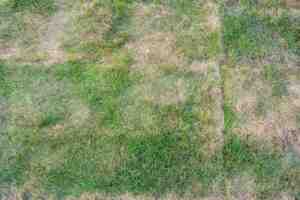Having a green and healthy lawn is the dream of every homeowner. However, achieving a lush lawn can be a daunting task. From regular watering, mowing, and fertilizing to dealing with pests and weeds, lawn care can be time-consuming and costly. But did you know that adding lime to your lawn can have benefits?
Lime is a natural mineral that can help balance the pH levels of your soil, making it more fertile and improving the health of your grass. In this article, we’ll explore the benefits of adding lime to your lawn and how to do it properly.
Benefits of Adding Lime to Your Lawn
| Benefits of Adding Lime to Your Lawn |
|---|
| Balances soil pH levels |
| Improves nutrient absorption |
| Reduces soil erosion |
| Prevents lawn diseases |
| Promotes lush and vibrant lawn |
1. Balances Soil pH Levels
Soil pH levels play a critical role in the health and growth of your lawn. If the pH levels are too high or too low, your grass won’t be able to absorb the necessary nutrients it needs to grow strong and healthy. This is where lime comes in – it’s a natural soil amendment that can help to balance soil pH levels and ensure that your grass has access to the nutrients it needs.
Lime works by neutralizing the acidity of the soil. In acidic soils, many essential nutrients become locked up and unavailable for your grass to use. This can result in stunted growth, yellowing leaves, and a general lack of vigor in your lawn. By adding lime, you can raise the soil pH levels and release these nutrients, making them more accessible to your grass.
The ideal pH range for most grasses is between 6.0 and 7.0. If your soil pH levels are below this range, your lawn is considered acidic. Adding lime can help to raise the pH levels and bring them closer to the optimal range. However, it’s important to note that too much lime can also be detrimental to your lawn. Over-application can cause the pH levels to become too high, resulting in alkaline soil conditions that can also harm your grass.
To determine the correct amount of lime to add to your lawn, it’s best to have your soil tested. Soil tests will provide you with information on the current pH levels of your soil and the amount of lime needed to balance them. This will ensure that you’re adding the right amount of lime to your lawn and that you’re not over-applying or under-applying it.
 2. Improves Nutrient Absorption
2. Improves Nutrient Absorption
In addition to balancing soil pH levels, adding lime to your lawn can also improve the absorption of essential nutrients by your grass. This is because, in acidic soils, many nutrients become locked up and unavailable for your grass to use. By raising the soil pH levels with lime, you can release these nutrients and make them more accessible to your grass.
Some of the key nutrients that can become locked up in acidic soils include nitrogen, phosphorus, and potassium. These nutrients are essential for healthy grass growth, and without them, your lawn may become stunted, yellowed, or susceptible to disease. By adding lime, you can release these nutrients and make them more available for your grass to use.
In addition to releasing nutrients, lime can also help to increase the efficiency of fertilizers. When applied to acidic soils, fertilizers can become less effective, as the nutrients in them become locked up and unavailable for your grass to use. By adding lime and raising the soil pH levels, you can make your fertilizers more effective and ensure that your grass is getting the nutrients it needs to grow strong and healthy.
It’s important to note that the benefits of lime on nutrient absorption will not be immediate. It can take several months for the soil to adjust and for the nutrients to become available to your grass. However, with regular applications of lime, you can continue to improve the nutrient absorption of your lawn and ensure that your grass is getting the nutrients it needs to thrive.
3. Reduces Soil Erosion
Soil erosion is a common problem that many homeowners face, especially if they live in areas with steep slopes or heavy rainfall. Soil erosion occurs when rainwater or wind strips away the top layer of soil, exposing the roots of your grass and causing it to become weak and vulnerable to damage. Fortunately, adding lime to your lawn can help to reduce soil erosion and protect your grass from these damaging effects.
Lime works to reduce soil erosion by improving soil structure and stability. When added to soil, lime reacts with the clay particles and forms stable aggregates. These aggregates help to bind the soil together, making it less susceptible to erosion. Additionally, lime can help to increase water infiltration and reduce surface runoff, further reducing the risk of soil erosion.
Another way that lime can help to reduce soil erosion is by promoting healthy root growth. As we’ve already discussed, lime can balance soil pH levels and release essential nutrients, making them more accessible to your grass. This, in turn, promotes healthy root growth, which helps to anchor your grass in place and prevent soil erosion.
It’s important to note that lime is not a cure-all for soil erosion. If you have steep slopes or other factors that contribute to soil erosion, you may need to take additional steps to protect your lawn. This may include installing erosion control measures such as retaining walls, terracing, or planting ground cover.
4. Fights Against Lawn Diseases
Lawn diseases can be a major problem for homeowners, leading to unsightly patches of dead grass and a weakened lawn. Many lawn diseases are caused by fungal infections, which thrive in acidic soil.
Adding lime to your lawn can help prevent lawn diseases by reducing the acidity of the soil. By creating a more alkaline environment, lime makes it harder for fungal infections to thrive, reducing the risk of disease and helping your lawn stay healthy and green.
 5. Promotes lush and vibrant lawn
5. Promotes lush and vibrant lawn
A lush and vibrant lawn is something that many homeowners strive to achieve. Fortunately, adding lime to your lawn can help to promote just that. By balancing soil pH levels, improving nutrient absorption, reducing soil erosion, and preventing lawn diseases, lime can help you achieve the lawn of your dreams.
How to Add Lime to Your Lawn
Now that you know the benefits of adding lime to your lawn let’s take a look at how to do it properly. Here are some steps to follow:
- Test your soil pH levels: Before adding lime to your lawn, it’s essential to test your soil pH levels to determine how much lime you need. You can buy a soil pH testing kit from a garden center or online.
- Determine the amount of lime to add: Once you have tested your soil, you need to determine how much lime you need to add to your lawn. The amount of lime required will depend on the current pH levels of your soil and the type of grass you have.
- Apply the lime: You can apply lime to your lawn using a spreader or by hand. Spread thelime evenly over your lawn, making sure to cover all areas. It’s essential to wear protective gear, such as gloves and a mask, when handling lime, as it can be caustic.
- Water your lawn: After applying lime, water your lawn thoroughly to help the lime penetrate the soil. This will also help to prevent the lime from burning your grass.
- Repeat if necessary: Depending on the pH levels of your soil, you may need to repeat the process of adding lime every year or every few years.
FAQs
Q: Is lime safe for pets and children?
A: Lime is generally safe for pets and children once it has been absorbed by the soil. However, it’s essential to keep them away from the area while you are applying lime and until it has been watered in.
Q: Can I apply lime at any time of the year?
A: Lime can be applied at any time of the year, but it’s best to do it in the spring or fall when the weather is cooler and there is less stress on your grass.
Q: How often should I apply lime to my lawn?
A: The frequency of lime application depends on the pH levels of your soil. It’s best to test your soil every few years and apply lime as needed.
Conclusion
Adding lime to your lawn is a simple and cost-effective way to improve the health and appearance of your lawn. By balancing soil pH levels, improving nutrient absorption, reducing soil erosion, and preventing lawn diseases, lime can help you achieve a lush and vibrant lawn. Just remember to test your soil pH levels, determine the amount of lime needed, and apply it properly to get the best results. With a little bit of effort and some lime, you can have the lawn of your dreams!

